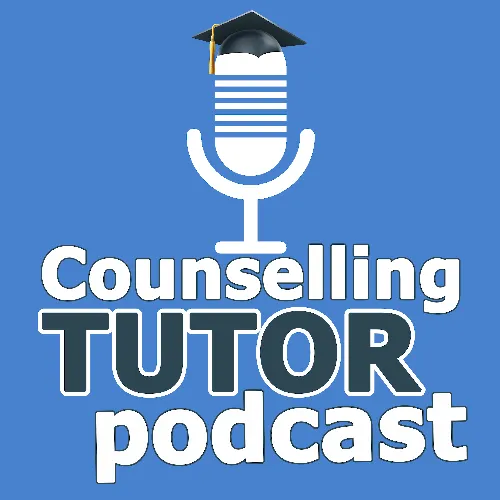256 – TEAM CBT
- Author
- Ken Kelly and Rory Lees-Oakes
- Published
- Sat 04 Mar 2023
- Episode Link
- https://counsellingtutor.com/team-cbt/
Building Rapport in Counselling - Use of Transitional Objects in Therapy
In Episode 256 of the Counselling Tutor Podcast, your hosts Rory Lees-Oakes and Ken Kelly are back with this week's three topics:
Firstly in 'Theory in Practice', we look at building rapport.
Then in 'Practice Today', Rory and Ken discuss transitional objects.
And finally in 'Practice Matters', Rory speaks with Sean Connolly about TEAM CBT.
Building Rapport in Counselling [starts at 02:34 mins]
Building rapport is a vital part of the therapeutic relationship. Listen as Rory and Ken take us through some of the key aspects of rapport and rapport building:
Rapport is about finding mutual, common ground - giving a little bit of yourself to another person and them reciprocating.
It's a starting point.
Trust is built through rapport, maybe leaving a client more willing to share.
It consists of neutral and safe dialogue that shows you're interested in the other and listening.
By using appropriate self-disclosure, you're showing that you're tuned in as a fellow human being.
Non-verbal communication - your facial expression, leaning slightly forwards.
Being open and honest if you feel that the rapport is not there.
Manage the relationship - try to keep it buoyant.
Congruence and exercising patience.
Take it to supervision if you feel there is a problem with the rapport between you and your client - discover whether it is a reluctance/issue on your end or the client's.
Revisit rapport - it's something that can differ from person to person, a skill that can constantly be developed.
Use of Transitional Objects in Therapy [starts at 23:09 mins]
I'm sure anyone listening can identify at least one object that you have, or have had, that worked as a transitional object.
The key points of this section include:
A transitional object is an object that can help someone to self-regulate.
Memories, places and people can be contained within, and connected to, an object.
They can sometimes transport you back to a time and/or place.
Sometimes even a person, such as you as the counsellor, can work as a transitional 'object' for someone e.g. "What would […] do?"
You can use a transitional object to help your client if there is going to be a break from sessions - something they can look at or hold that will remind them of what's been discussed in sessions and help them to self-regulate.
It could work as an ending - something the client can take away as a reminder of the progress they've made.
TEAM CBT [starts at 37:01 mins]
In this week's 'Practice Matters', Rory speaks with Sean Connolly about TEAM CBT.
The main points of this discussion include:
TEAM:
T - testing the client's mood at the beginning and end of sessions, looking for any progress (or lack/backwards step in progress). This creates room for a conversation about this and things that could be done differently or what needs to be focused on.
E - empathy.
